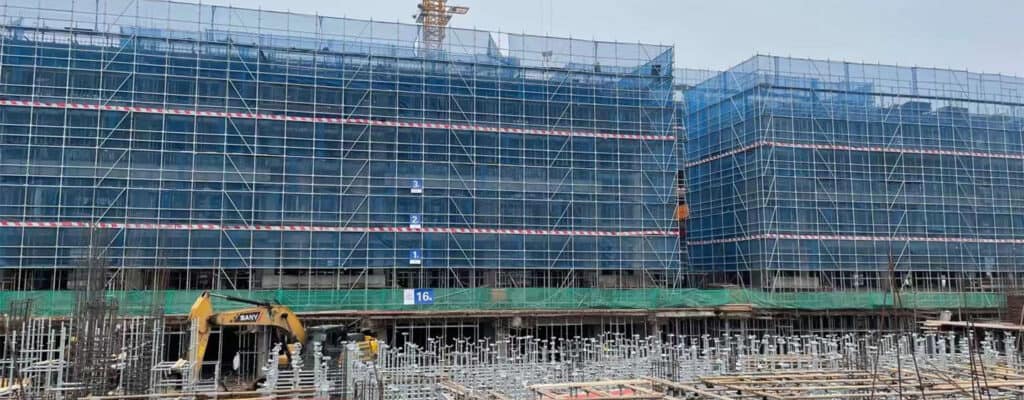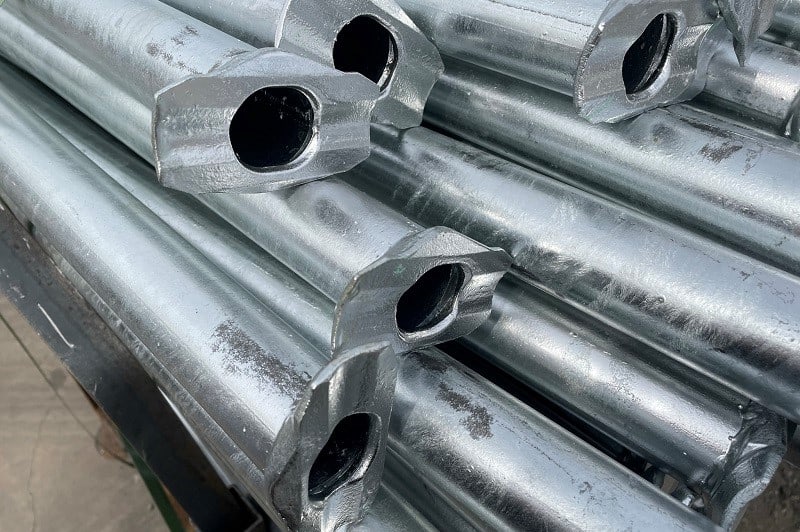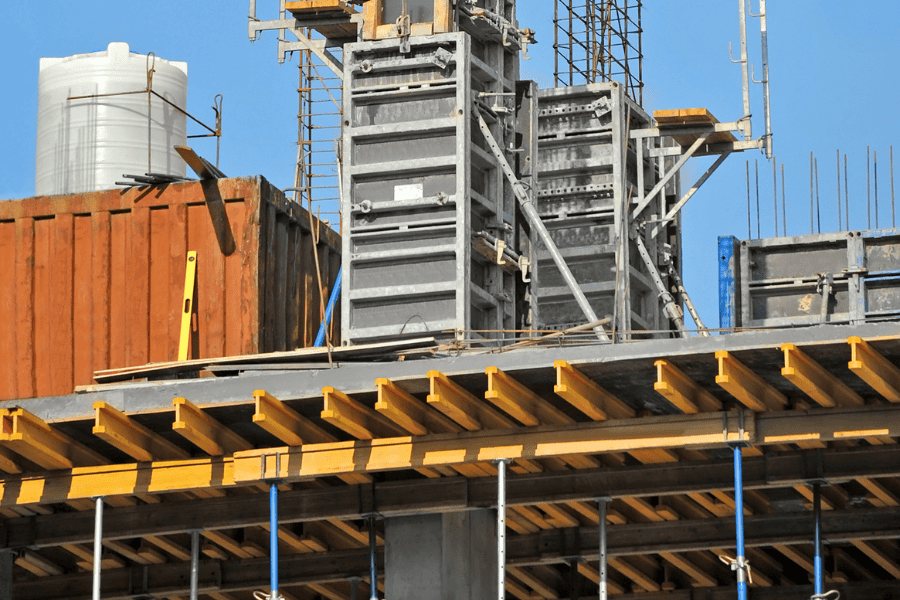Introduction
L'échafaudage à cage est l'une des structures d'échafaudage les plus populaires et les plus pratiques pour les travaux en intérieur et en hauteur. Grâce à sa conception autoportante en forme de grille, ce type d'échafaudage offre un accès sûr et stable pour des tâches telles que la pose de plafonds, la peinture, les travaux de mécanique, d'électricité et d'entretien général. Que vous soyez entrepreneur en bâtiment ou gestionnaire d'installations, comprendre les échafaudages à cage est essentiel pour des opérations efficaces et sécurisées en hauteur.
Qu'est-ce qu'un échafaudage en cage à oiseaux ?
L'échafaudage en cage est une structure indépendante et autoportante conçue pour créer une plateforme d'accès temporaire. Il est constitué d'une grille de poteaux verticaux reliés par des lisses et traverses horizontales à des hauteurs de levage régulières. Cette structure en cage offre une zone de travail robuste et sûre, idéale pour accéder à des surfaces planes et surélevées comme les plafonds ou les soffites.
Le nom « cage à oiseaux » vient de sa structure cubique, rappelant une cage. Ce type d'échafaudage n'a pas besoin d'être attaché aux bâtiments adjacents, ce qui le rend très flexible et mobile dans les grands espaces ouverts.

Composants clés d'un échafaudage en cage à oiseaux
Comprendre les principaux composants permet de garantir une configuration sûre et conforme :
- Normes verticales : Poteaux verticaux qui soutiennent la structure verticalement.
- Grands livres horizontaux : Reliez les verticales horizontalement et soutenez les traverses.
- Traverses : S'asseoir sur des registres pour maintenir les planches d'échafaudage et fournir des plates-formes de travail.
- Planches d'échafaudage : Plateformes sur lesquelles les travailleurs se tiennent debout ; généralement en acier ou en bois.
- Plaques de base : Répartir le poids et stabiliser les poteaux au sol.
- Garde-corps et plinthes : Dispositifs de sécurité qui empêchent les chutes et sécurisent les matériaux.
- Contreventement transversal et longitudinal : Améliore la stabilité structurelle des baies et des ascenseurs.
Avantages des échafaudages à cage à oiseaux
Les échafaudages à cage à oiseaux offrent plusieurs avantages convaincants par rapport aux autres types d'échafaudages :
1. Stabilité et sécurité
Avec plusieurs rangées de supports verticaux et des enceintes complètes, les échafaudages à cages à oiseaux offrent un excellent équilibre et une protection contre les chutes.
2. Accessibilité
La grande plate-forme permet à plusieurs travailleurs et équipements de travailler simultanément, réduisant ainsi la congestion et augmentant la productivité.
3. Polyvalence
Les échafaudages à cage à oiseaux peuvent être configurés avec une ou plusieurs hauteurs de levage et adaptés à différentes tailles de grille.
4. Assemblage rapide
Les systèmes de cages à oiseaux modulaires sont parmi les plus rapides à monter, idéaux pour les projets urgents ou à court terme.
5. Rentable
Ils sont économiques en raison de leur potentiel de réutilisation, de leur structure simple et de leurs faibles besoins en main-d’œuvre lors du montage et du démontage.

Procédures d'installation et de démontage appropriées
Pour garantir la sécurité et l’intégrité structurelle, suivez ces bonnes pratiques :
- Évaluation du site
- Assurez-vous que le sol est plat et exempt de dangers.
- Vérifiez les obstructions en hauteur et l'adéquation de la zone de travail.
- Assurez-vous que le sol est plat et exempt de dangers.
- Suivez les instructions du fabricant
- Utilisez toujours les spécifications fournies par le concepteur ou le fournisseur de l’échafaudage.
- Utilisez toujours les spécifications fournies par le concepteur ou le fournisseur de l’échafaudage.
- Installer séquentiellement
- Commencez par les plaques de base et les verticales.
- Ajoutez des registres et des traverses pour construire la grille.
- Protégez solidement l'ascenseur supérieur avec des planches d'échafaudage.
- Commencez par les plaques de base et les verticales.
- Ajouter des fonctionnalités de sécurité
- Installer des garde-corps, des plinthes et des échelles d’accès.
- Utilisez un équipement de protection contre les chutes si nécessaire.
- Installer des garde-corps, des plinthes et des échelles d’accès.
- Inspection
- Avant utilisation, inspectez tous les joints, les planches et les contreventements pour détecter tout défaut ou assemblage incorrect.
Considérations clés en matière de sécurité
- Seul un personnel qualifié doit monter et démonter l'échafaudage.
- Évitez d’utiliser des échafaudages en cas de mauvais temps (en particulier en cas de pluie ou de vents violents).
- Utiliser un équipement de protection individuelle (EPI) approprié.
- Respecter les limites de charge (généralement pas plus de 0,75 kN/m² sur la plate-forme de travail).
- Pour les grandes surfaces, renforcez la structure avec des contreventements supplémentaires à chaque troisième rangée et quatrième travée.

Où les échafaudages à cage à oiseaux sont-ils couramment utilisés ?
Les échafaudages à cage à oiseaux sont le plus souvent utilisés pour :
- Installations et entretien des plafonds
- Peinture et décoration
- Travaux mécaniques, électriques et de plomberie (MEP)
- Rénovations intérieures de bâtiments commerciaux ou industriels
- Réparations de toiture ou de soffite
- Installations de systèmes de ventilation et d'éclairage
Sa large zone de couverture le rend particulièrement efficace pour les grands espaces commerciaux, les auditoriums, les aéroports, les centres commerciaux et les entrepôts.
Comparaison des échafaudages à cage à oiseaux avec d'autres types
Contrairement aux échafaudages suspendus, en porte-à-faux ou supportés, les échafaudages à cage à oiseaux :
- N'a pas besoin d'être attaché aux bâtiments ou autres structures.
- Offre des zones de travail plus larges, ce qui le rend idéal pour les travaux de plafond intérieur.
- Prend en charge plusieurs travailleurs avec des outils à la fois, grâce à sa grande capacité de charge.
Conclusion
L'échafaudage à cage d'oiseau est une solution fiable, sûre et économique pour les projets d'accès en hauteur en intérieur. Il se distingue par :
- Conception indépendante et autoportante
- Installation rapide et adaptabilité modulaire
- Grandes plateformes adaptées à plusieurs travailleurs
- Caractéristiques de sécurité solides et capacité de charge
En comprenant les composants, les procédures d’installation et les précautions de sécurité, les équipes de construction peuvent utiliser des échafaudages à cage à oiseaux pour augmenter l’efficacité et assurer la sécurité du site.





